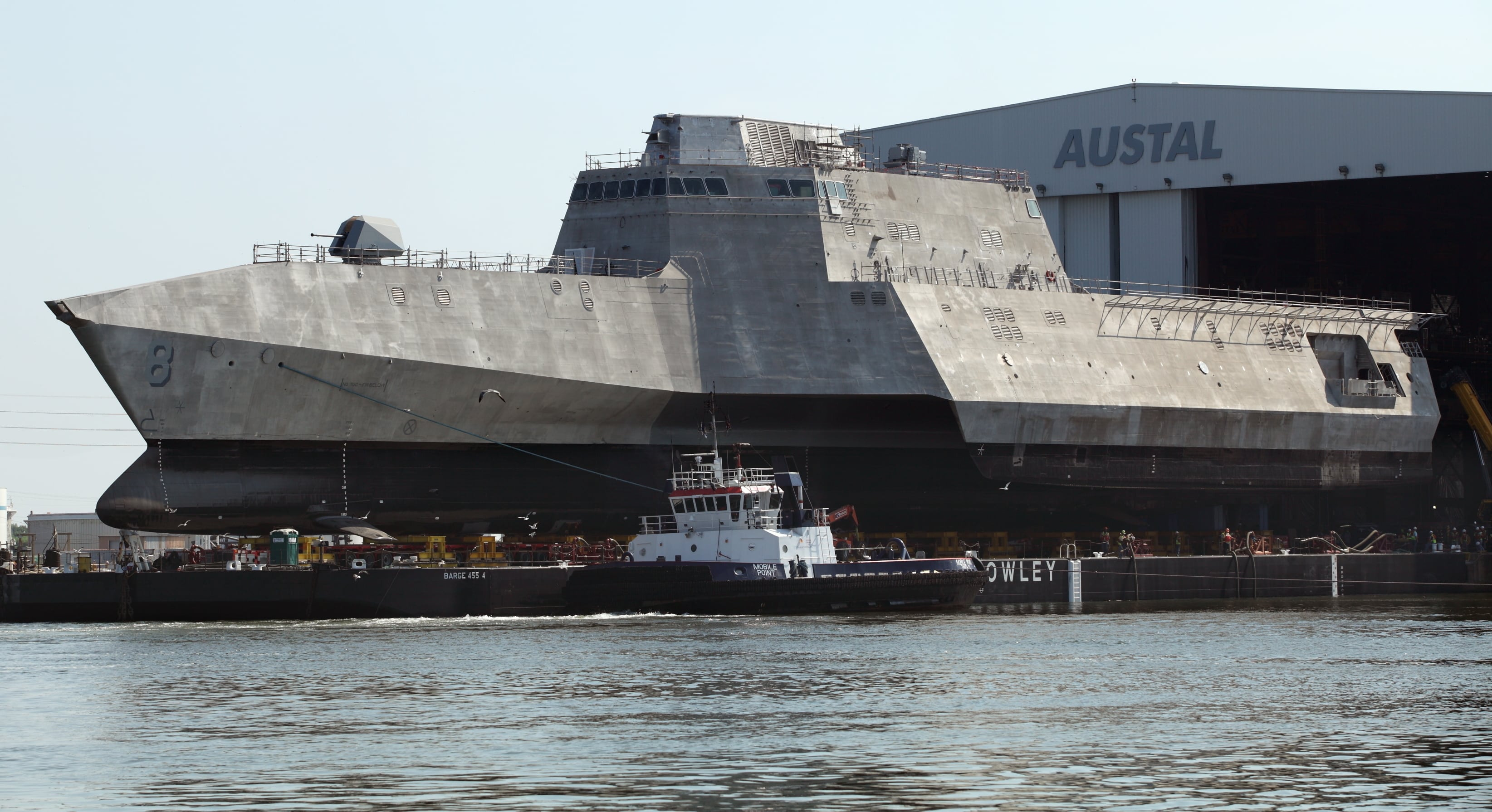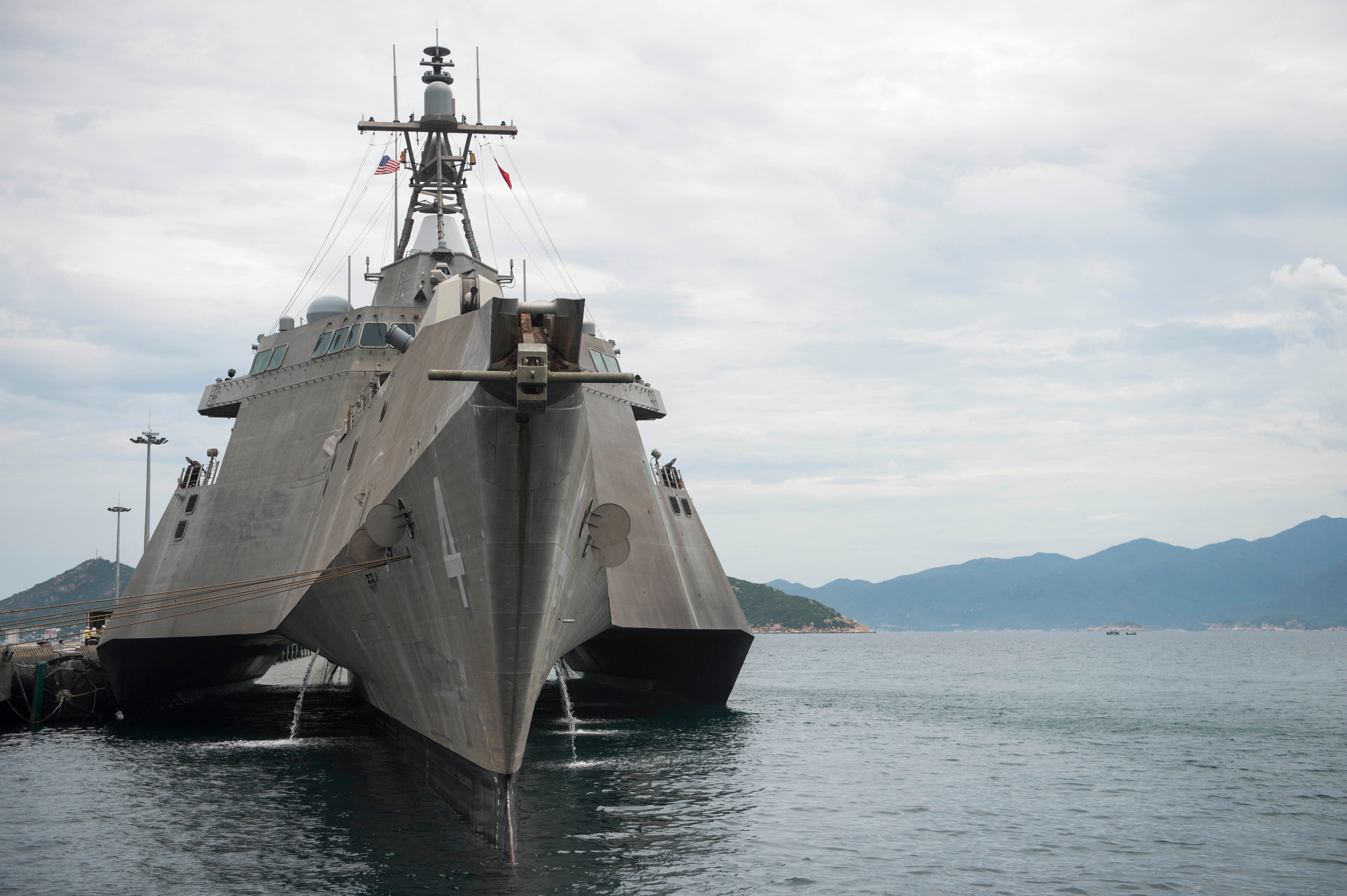WASHINGTON — A competition for a new over-the-horizon missile destined to give the Navy’s littoral combat ship some teeth is being looked at for the FFG(X) program, Raytheon’s top executive said April 26.
The new missile program, which the Navy is looking to award by the end of the summer, is part of an effort to make the Navy’s littoral combat ship more survivable against high-end competitors such as Russia and China.
Thomas Kennedy, Raytheon’s chief executive officer, said in an earnings call that the Raytheon/Kongsberg submission known as the Naval Strike Missile is in a strong position for both LCS and for the future frigate.
“This is a program where, Raytheon and Kongsberg, as a team, we submitted a proposal for something we called The Naval Strike Missile, which is the Navy’s over-the-horizon weapon system that they need to put on the LCS. But turns out they’re also going to put them on all the future frigates,” Kennedy said.
“We think we’re in a very good position there,” he continued. “We have a system that requires minimum development. Some small changes we’ll make, but we can go into production very quickly, which is something the United States Navy needs. We are anticipating an award here in Q2 with significant more funds placed against it in the fiscal year 2019 budget to move forward with that program.”
RELATED

The bidding for the over-the-horizon missile has been fraught with hurdles, with two major competitors dropping from the process leaving Raytheon and Kongsberg’s Naval Strike Missile as the team to beat.
Boeing’s Harpoon missile and Lockheed Martin’s Long-range Anti-Surface Missile both were pulled from the competition. The companies felt the competition was skewed towards the Raytheon/Kongsberg offering, Defense News reported in May.
The Naval Strike Missile has a range of more than 100 nautical miles and has target-recognition capabilities that in some cases limit the need for another ship or aircraft to hold a track on the target.
FFG(X)
If the Navy is indeed planning to add the over-the-horizon missile to the FFG(X), it gives some insight into how the ship’s concept is coming together.
The Naval Strike Missile is launched from canisters on deck similar to the Navy’s current anti-surface weapon, the Harpoon missile. That frees up the planned vertical launch cells for other missions.
Next summer will see a major milestone in the Navy’s new frigate competition as the Navy looks to accept proposals due in June 2019.
The Navy awarded $15 million contracts to Huntington Ingalls, Lockheed Martin, Austal USA, General Dynamics Bath Iron Works, and Italian shipbuilder Fincantieri to gin up mature designs before the Navy drops down to a single detailed design and construction contract.
All the contracts contain options that could grow the value to between $22 million and $23 million, according to the contract announcement.
Both Austal and Lockheed Martin are competing amped up versions of their littoral combat ships. Huntington Ingalls is likely offering a version of the Coast Guard’s National Security Cutter. Fincantieri is offering its FREMM design. General Dynamics is offering a patrnership with Spanish shipbuilding Navantia, for its F100 frigate.
RELATED

David B. Larter was the naval warfare reporter for Defense News.







